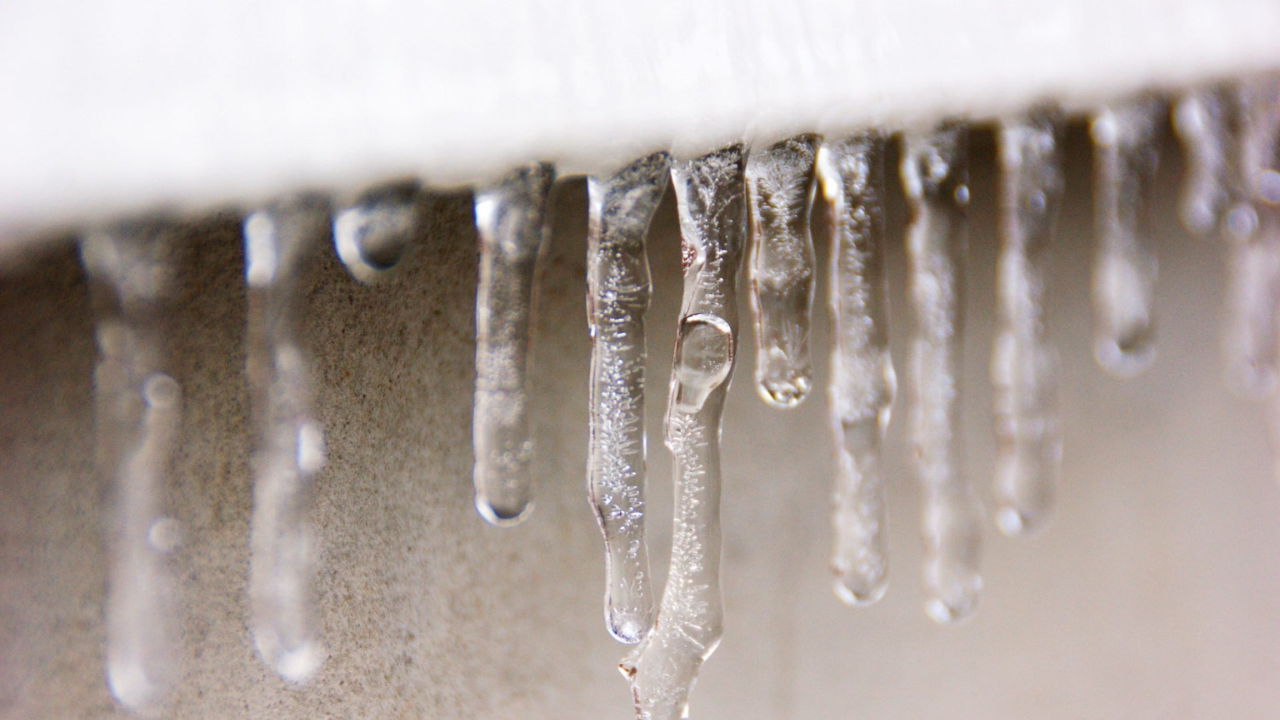

Despite winter being celebrated as the most wonderful time of the year, it brings about many challenges for homeowners. From boilers breaking to mould growth, the problems in winter can be endless and pose a significant financial burden. If you haven't already, you should look at the 4 essential household checks I'm carrying out before winter arrives. It's saved me from a few disasters, that's for sure!
However, no matter how many checks we do, a lot of home problems can unexpectedly creep up on us. With this in mind, I spoke a little further with Magnet Trade who have explored the most common winter problems that can take place in the home, and what you can do to avoid them. Mike Norton, Trade and Projects Director, also revealed his insight on how to proactively avoid incurring unexpected expenses during the colder months, and it's this advice I'll be sharing with you today.
Before you find out more, check out these 5 low-cost ways to heat your home for longer this winter.
1. Frozen Pipes
Freezing pipes are an extremely prevalent winter challenge for homeowners. With the possibility of pipes bursting due to extended exposure and low temperatures, they are a critical concern.
“When pipes freeze, water flow halts, and the expansion of frozen water exerts pressure, leading to cracks and eventual bursts. Pipes are vulnerable when temperatures dip below 0 degrees Celsius and the risk of bursting increases with prolonged freezing conditions.
“To safeguard against freezing pipes this winter, maintain home thermostats above 12 degrees Celsius, insulate pipes in unheated areas using heat tape and open cupboards and doors to ensure heat reaches pipes behind them. Additionally, keep outside valves open to allow any water inside the pipes to expand without causing damage."
2. Mould Growth
During the winter season, numerous households contend with moisture and mould challenges stemming from condensation and the heating preferences we adopt during the colder months.
Sign up to the T3 newsletter for smarter living straight to your inbox
Get all the latest news, reviews, deals and buying guides on gorgeous tech, home and active products from the T3 experts
“The act of warming our living spaces during colder months creates an ideal environment for mould growth. In warmer spaces, air can hold more moisture and when moist air comes into contact with cold surfaces, condensation forms. Mould is often a by-product of condensation and can initially appear as black spots in the corners of rooms or in poorly-ventilated spaces such as behind furniture.
“To prevent mould growth in your home during the winter, maintain a humidity level of less than 45% throughout the property. Consider putting dehumidifiers throughout your home to prevent mould growth. Also, be sure to keep a look out for condensation forming on windows and window sills, and wipe it off as soon as you see it."
Take a look at these 6 expert-approved tips to help prevent condensation for more information.
3. Boiler Breakdowns
Boiler breakdowns are extremely common at this time of year, mostly due to the heightened demand for warmth at home. The harsh seasonal conditions force boilers to operate at maximum capacity, leading to significant wear and tear, and raising the risk of breakdowns.
“However, the primary culprit behind winter boiler breakdowns is the negligence of regular maintenance by homeowners. Often overlooked, this lack of attention can be a costly mistake. Boilers demand consistent upkeep and servicing to ensure optimal functionality.
When it comes to preventative methods to stop your boiler from breaking down this winter, be sure that you schedule yearly maintenance checks. Whilst this may come at a cost, they’ll be able to identify and address any potential issues before they escalate and become more costly.
Additionally, be sure to check your boiler's pressure - the pressure should typically be between 1 and 1.5 bar on your boiler’s pressure gauge, and bleed your radiators to ensure that your central heating is operating efficiently."
4. Peeling paint
“During winter, peeling paint is a common problem as the intense cold prompts the material beneath the paint to expand and contract, weakening the bond between the surface and the paint. Furthermore, prolonged exposure to temperature fluctuations can result in the paint developing cracks and flaking.
“Paint tends to peel when a surface hasn’t been primed properly. With this in mind, prime all walls before painting - this will help the paint adhere better to the surface as well as provide an additional layer of protection between the material and paint.
“Equally, invest in good quality paint. Quality paints often contain certain additives including Titanium Oxide that increase their durability and make them resistant to extreme weather conditions.”
Interested in more? Check out the 6 items you should never keep in your shed over winter!

Lizzie is T3's Home Living Staff Writer, covering the latest in style, wellness and beauty tech. From skincare gadgets to vacuum cleaners, she's your go-to for trends and top recommendations.
When not writing, Lizzie enjoys mooching around Bath, spending time with loved ones, or testing her review units – often during an enthusiastic cleaning spree!
-
 Three exercises to 'life-proof' your shoulders, according to a mobility expert
Three exercises to 'life-proof' your shoulders, according to a mobility expertHealthy shoulders mean better movement, more strength and less injury
By Bryony Firth-Bernard
-
 The 7 luxury travel items I won't leave home without – and why you shouldn't either
The 7 luxury travel items I won't leave home without – and why you shouldn't eitherI've flown for many hundreds of hours – and know these luxury travel items will improve your journey
By Mike Lowe